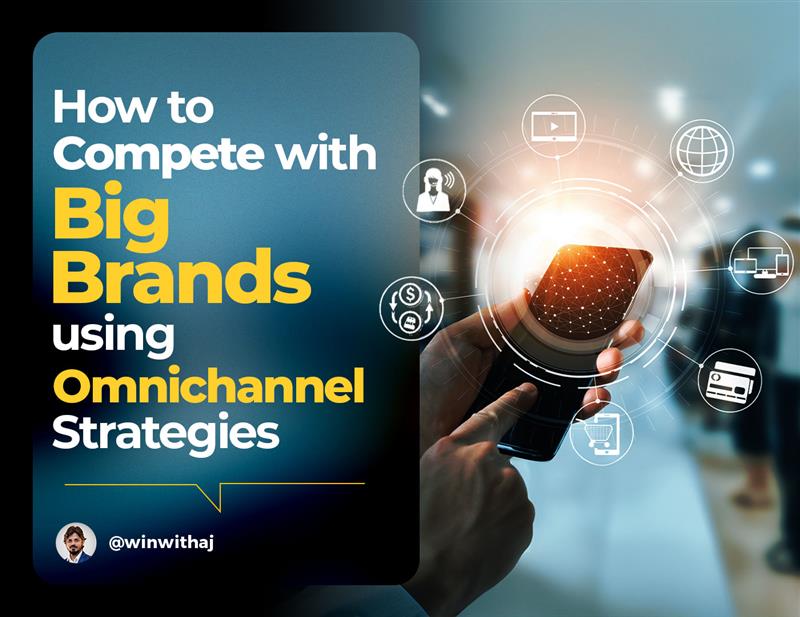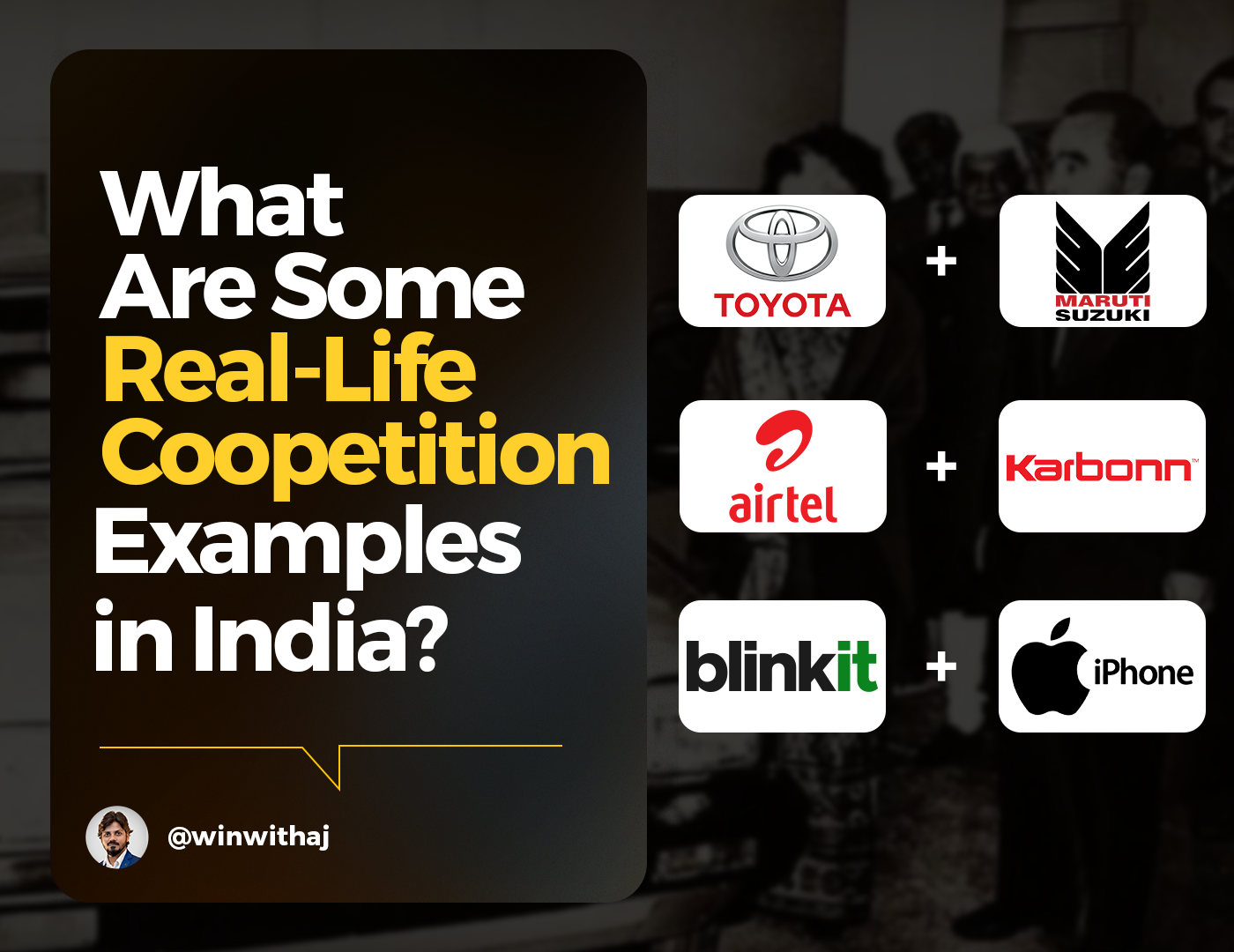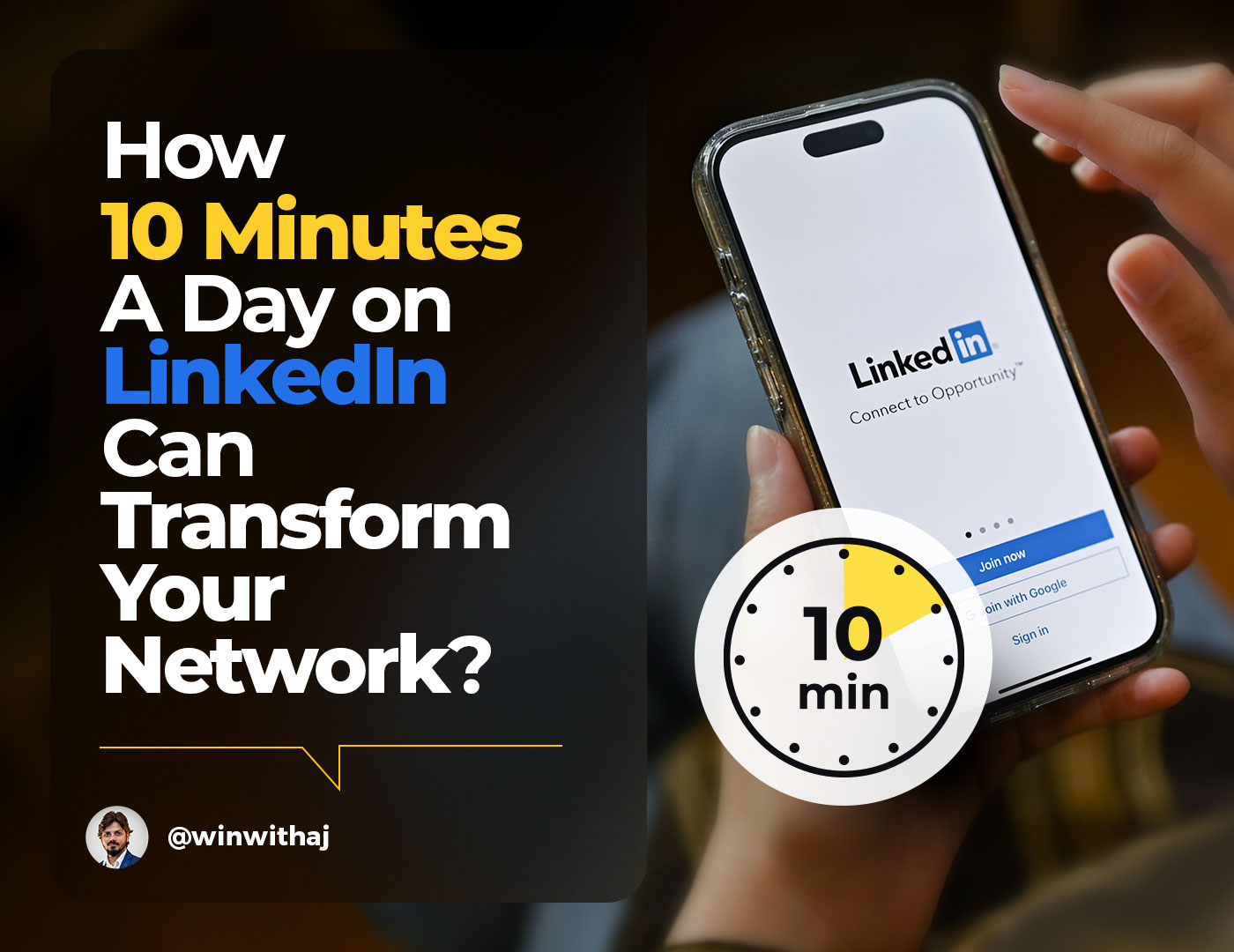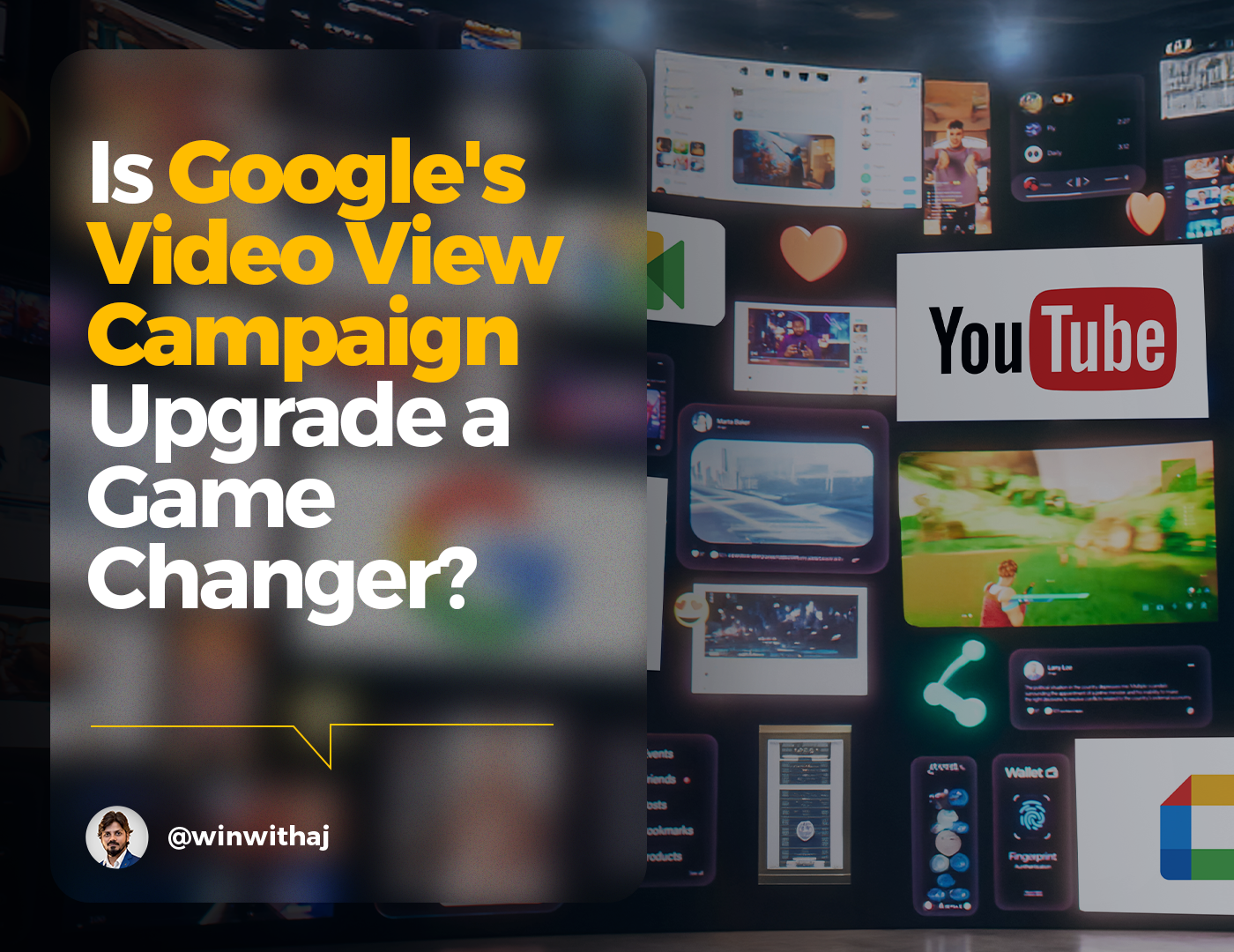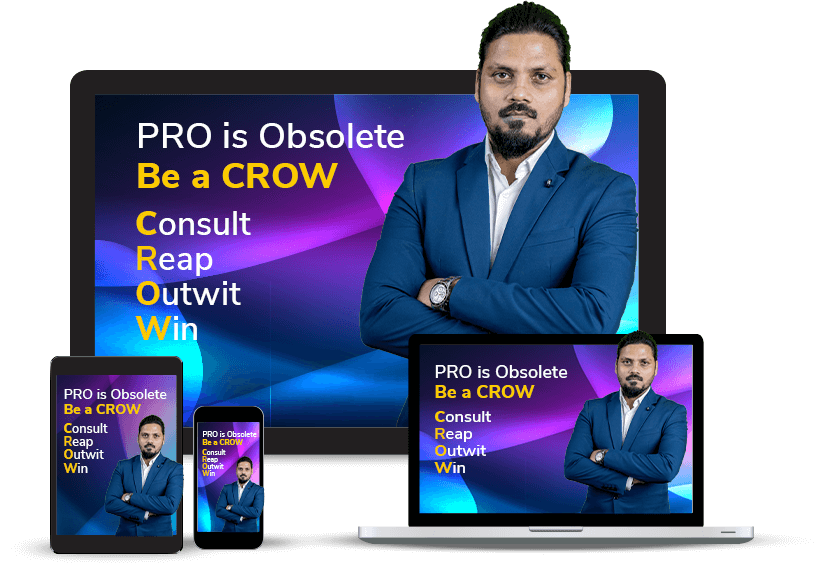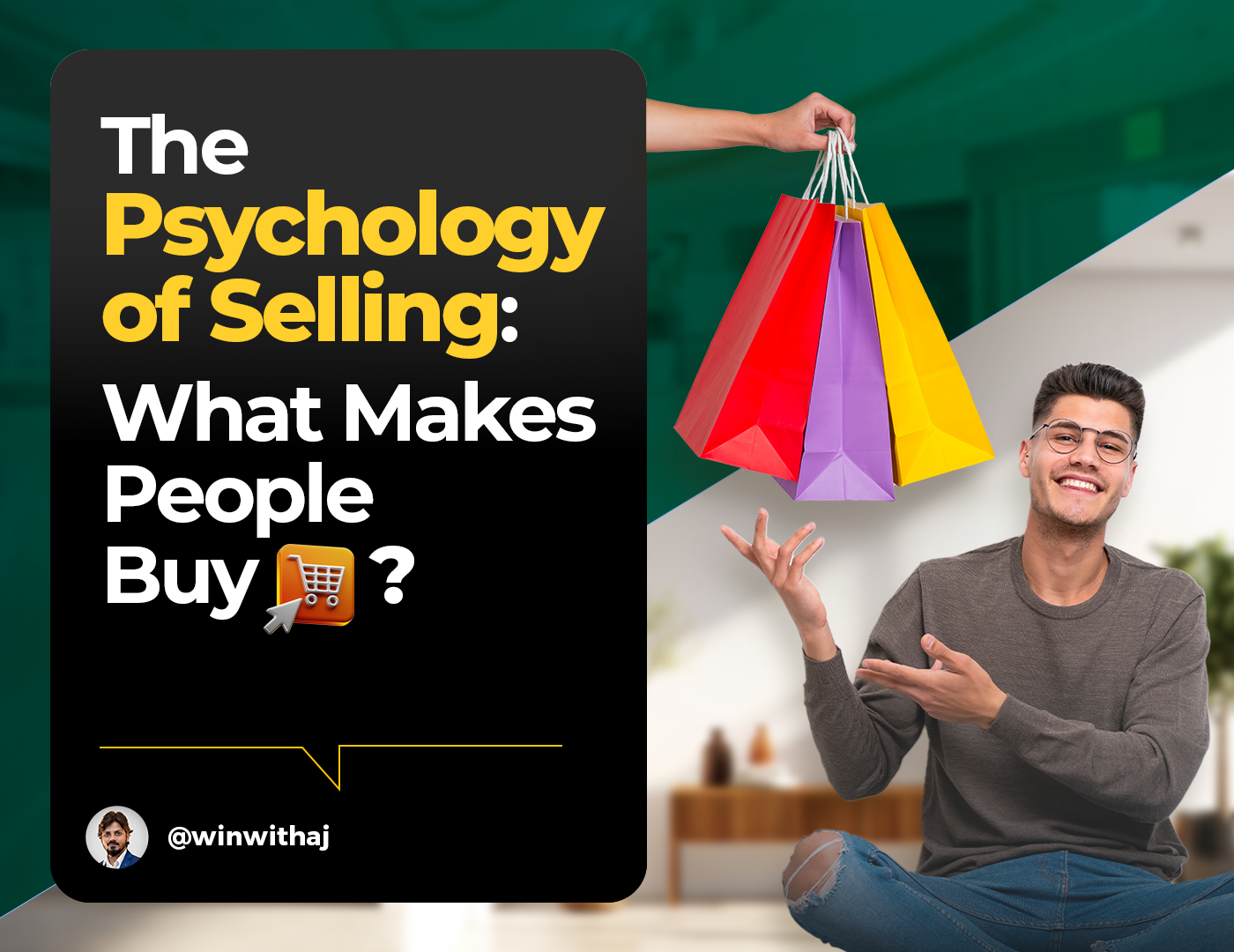
The Psychology of Selling: What Makes People Buy?
Why do some brands effortlessly capture our loyalty while others struggle to make a sale? In today’s competitive Indian market, it’s no longer enough to simply showcase features or drop prices. What if you could tap into the Psychology of Selling behind every purchase decision?
Have you ever found yourself inexplicably drawn to buy a product—even when you didn’t need it? Or perhaps you’ve walked into a store with a specific item in mind, only to leave with something completely different.
What makes a buyer’s heart race or makes them hesitate at the checkout? Understanding these moments isn’t just fascinating; it’s the key to unlocking successful sales.
What if you could anticipate your customers’ feelings and motivations, guiding them seamlessly from curiosity to commitment?
This isn’t just theory. This is about real people making real decisions every day. Whether you’re a seasoned sales professional or a business owner hoping to boost your conversions, the answers lie in understanding the emotional triggers and mental pathways that influence buying behavior.
Join me on this journey as we dive into the psychology of selling that shapes our shopping experiences. Together, we’ll explore practical strategies to ethically connect with customers, enhance your sales approach, and ultimately transform the way you engage with your audience.
The Fundamental Psychology Behind Purchasing Decisions
The Rational vs. Emotional Buyer
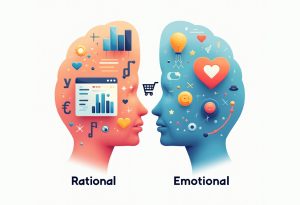
Research consistently shows that while we like to consider ourselves logical consumers, emotions play a dominant role in our purchasing decisions. According to Harvard Business School professor Gerald Zaltman, 95% of purchasing decisions are subconscious, driven primarily by emotional factors.
The Dual-Process Theory
- System 1: Fast, automatic, emotional thinking
- System 2: Slow, deliberate, logical reasoning
Most consumers initially react with System 1 (emotional response), then use System 2 (rational thinking) to justify the decision they’ve already emotionally made. Understanding this balance is crucial when crafting sales approaches.
Trust as the Foundation

Trust indicators that matter to Indian consumers:
- Social proof (particularly from family and trusted networks)
- Brand reputation and longevity
- Transparency in pricing and policies
- Quality certifications and standards
- Personal relationships with vendors
A 2023 survey by Nielsen India found that 78% of Indian consumers consider trust a primary factor when making purchase decisions, significantly higher than price considerations at 62%.
The Four Key Motivators

According to psychologist Robert Cialdini, author of “Influence: The Psychology of Persuasion,” most buying decisions stem from four core desires:
- The desire to gain: Acquiring something valuable
- The desire to avoid loss: Preventing negative outcomes
- The desire for comfort: Seeking ease and convenience
- The desire for pride: Enhancing social status and self-image
These motivators manifest differently across demographics and regions in India, with urban consumers more likely to prioritize status and convenience, while rural consumers often focus more on value and durability.
Psychological Triggers That Drive Sales: Psychology of Selling
The Principle of Scarcity
Scarcity creates urgency and increases perceived value. When something becomes limited in availability, it becomes more desirable. This principle explains why “limited time offers,” “exclusive deals,” and “only X items left” messaging significantly boosts conversions.
Real-world application
Flash sales on e-commerce platforms like Flipkart and Amazon leverage scarcity brilliantly, creating shopping festivals that generate massive sales volumes in short timeframes.
The Power of Social Proof
Humans are inherently social creatures who look to others for guidance on their own behavior. This psychological tendency makes social proof one of the most powerful persuasion tools.
Types of social proof that influence Indian buyers:
- Customer testimonials and reviews
- Celebrity endorsements
- Influencer recommendations
- User-generated content
- Expert opinions
- Family and friend recommendations
A study by Kantar revealed that 68% of Indian consumers read online reviews before making purchase decisions, while 72% trust recommendations from people they know.
The Reciprocity Principle
When someone gives us something, we feel compelled to return the favor. This deeply ingrained social norm can be ethically applied in sales through:
- Free samples
- Valuable content
- Unexpected upgrades
- Personalized attention
- Complimentary consultations
Indian consumers show particularly strong responses to reciprocity, with research indicating that free sampling campaigns in Indian markets yield conversion rates 35% higher than in Western markets.
Loss Aversion
People feel the pain of loss more intensely than the pleasure of equivalent gain. Studies show we typically feel losses about twice as strongly as gains of the same value.
How to ethically leverage loss aversion:
- Free trial periods (creates a sense of ownership)
- Money-back guarantees (reduces perceived risk)
- Limited-time offers (creates fear of missing out)
- Emphasizing what customers stand to lose by not purchasing
The Authority Principle
People tend to follow the lead of credible, knowledgeable authorities. Establishing expertise increases trust and persuasiveness.
Building authority with Indian consumers:
- Industry certifications and credentials
- Educational content that demonstrates knowledge
- Media appearances and publications
- Expert endorsements
- Professional associations
The Commitment and Consistency Principle
Once people take a small step in a particular direction, they’re more likely to continue in that direction. This explains why free trials, small initial commitments, and gradual engagement strategies work so effectively.
Application strategies:
- Free samples leading to small purchases
- Starter packages before premium offerings
- Multi-step sales processes with incremental commitments
- Loyalty programs that build on previous purchasing behavior
The Customer Decision Journey
The AIDA Model Applied
The traditional AIDA model (Attention, Interest, Desire, Action) remains relevant but has evolved for modern consumers:
Attention
- Capturing initial awareness through targeted messaging
- Standing out in an increasingly crowded marketplace
- Using pattern interrupts to break through information overload
Interest
- Building genuine connection with relevant value propositions
- Personalizing communication based on customer needs
- Providing solution-oriented content rather than product-focused information
Desire
- Triggering emotional connections to products or services
- Using storytelling to create aspirational scenarios
- Demonstrating specific benefits related to customer pain points
Action
- Creating frictionless purchasing processes
- Providing clear calls to action
- Removing barriers to completion
The Modern Buyer’s Journey
Today’s consumer journey, particularly in India’s rapidly digitizing marketplace, is rarely linear:
- Problem Recognition: The consumer identifies a need or problem
- Information Search: Research across multiple channels (78% of Indian consumers use at least three channels when researching purchases)
- Evaluation of Alternatives: Comparison shopping and review assessment
- Purchase Decision: Final selection and transaction
- Post-Purchase Behavior: Experience with the product and brand relationship development
The Boston Consulting Group found that Indian consumers now spend an average of 2-3 weeks researching significant purchases, consulting an average of 5-7 information sources before making decisions.
Practical Psychology of Selling Applications: Ethical Persuasion Techniques
Effective Framing Strategies
How you present information significantly impacts decision-making. Price framing offers a clear example:
- Anchoring: Presenting a higher-priced option first makes subsequent options seem more reasonable
- Bundling: Combining products to create perceived additional value
- Decoy pricing: Adding a third option to make one of the other options look more attractive
- Installment framing: Breaking larger amounts into smaller, more palatable payments
The Power of Stories in Sales
Storytelling bypasses rational resistance and connects directly with emotional decision-making centers. Effective sales narratives:
- Create relatable scenarios featuring your target audience
- Follow a clear problem-solution structure
- Include specific, concrete details rather than generalizations
- Feature authentic emotional components
- Demonstrate transformation through product/service use
According to research published in the Journal of Marketing Research, stories can increase consumers’ willingness to pay by up to 32% compared to purely feature-based presentations.
Personalization and the Dopamine Effect
When customers hear their name or receive personalized recommendations, the brain releases dopamine, creating positive associations with your brand. Strategies for effective personalization include:
- Using customer data to tailor communications
- Creating segmented marketing campaigns based on behavior
- Implementing dynamic website content based on visitor characteristics
- Developing personalized follow-up sequences
- Building recommendation engines using past purchase data
McKinsey research indicates that personalization can drive 5-15% revenue increases for companies in the retail, travel, and financial services sectors.
The Psychology of Pricing
Pricing strategies leverage several cognitive biases:
- Charm pricing: Using prices ending in 9 or 7 (₹299 instead of ₹300)
- Prestige pricing: Using round numbers for luxury items (₹5,000 rather than ₹4,999)
- Price anchoring: Showing the original price alongside the discounted price
- Bundle pricing: Offering “value packages” that simplify decision-making
- Decoy pricing: Presenting options to make the target option seem more attractive
A study by the Chicago Booth School of Business found that charm pricing (prices ending in 9) can increase sales by up to 24% compared to round number pricing.
Cultural Considerations for the Indian Market
Regional Psychology Variations
India’s diverse cultural landscape creates significant regional variations in purchasing psychology:
- North India: Greater emphasis on status and brand reputation
- South India: Higher focus on value and quality assurance
- East India: Stronger loyalty to established brands and traditional providers
- West India: More openness to innovation and new market entrants
Urban vs. Rural Consumer Psychology
According to KPMG research, urban and rural Indian consumers display distinct psychological patterns:
Urban Consumers:
- More influenced by digital marketing and social media
- Higher brand consciousness and status sensitivity
- Greater responsiveness to convenience factors
- More likely to make impulse purchases
Rural Consumers:
- Stronger influence from community recommendations
- Higher value placed on durability and practical utility
- Greater price sensitivity but willing to invest in proven quality
- More responsive to demonstration-based marketing
The Role of Family in Purchase Decisions
In India, purchase decisions—especially for big-ticket items—often involve multiple family members. Research by Ipsos shows that:
- 76% of major purchase decisions in Indian households involve family consultations
- 82% of consumers consult at least one family member before making significant purchases
- Younger consumers still seek family approval for major purchases despite increasing financial independence
Digital Psychology of Selling: Online Buying Triggers
Website Design Psychology
How your digital presence is structured significantly impacts conversion rates:
- Visual hierarchy: Directing attention to key elements through size, color, and positioning
- Cognitive fluency: Making information easy to process increases trust and likelihood of purchase
- Choice architecture: How options are presented affects decision outcomes
- Color psychology: Different colors evoke specific emotions and associations
Research shows that websites with clean designs and intuitive navigation see conversion rates up to 200% higher than cluttered, complex sites.
Mobile Shopping Psychology
With over 750 million smartphone users in India, understanding mobile shopping psychology is essential:
- Micro-moments: Brief, intent-driven mobile interactions that lead to purchases
- Thumb zone design: Placing important elements where thumbs naturally rest during mobile browsing
- Progressive disclosure: Revealing information gradually to prevent cognitive overload on small screens
- Simplified checkout: Reducing steps for mobile completion
According to Google India, 58% of Indian consumers will abandon mobile purchases if the process takes more than three steps.
The Impact of Reviews and Ratings
Online reviews significantly influence purchasing behavior:
- 92% of Indian online shoppers read reviews before making purchases
- Products with 50+ reviews have conversion rates 4.6% higher than those with fewer reviews
- Responding to negative reviews can increase conversion rates by up to 30%
- The presence of a few negative reviews actually increases perceived authenticity
Building Long-Term Customer Relationships
The Psychology of Customer Loyalty
Creating loyal customers involves understanding several psychological principles:
- Peak-end rule: People judge experiences based on how they felt at the peak and at the end
- Status and recognition: Loyalty programs that confer status create stronger attachment
- Habit formation: Creating purchase patterns that become automated behaviors
- Identity alignment: When brands become part of how customers see themselves
Research by Bain & Company indicates that increasing customer retention rates by just 5% can increase profits by 25-95%.
Trust-Building Strategies
Trust is established through consistent demonstration of:
- Competence: Showing expertise and delivering quality
- Reliability: Consistently meeting expectations
- Honesty: Transparent communication about capabilities and limitations
- Benevolence: Demonstrating genuine concern for customer outcomes
The Role of Post-Purchase Communication
How you handle the relationship after the sale significantly impacts future purchases:
- Reinforcement: Validating the customer’s decision
- Usage support: Helping customers get maximum value
- Community inclusion: Making customers feel part of something larger
- Anticipatory service: Addressing needs before they become issues
Ethical Considerations in Psychological Selling
The Line Between Persuasion and Manipulation
Ethical selling requires:
- Transparent communication about product capabilities
- Avoiding false scarcity or misleading claims
- Respecting customer autonomy in decision-making
- Prioritizing customer needs over short-term sales goals
Unethical tactics may boost short-term results but damage long-term trust and brand reputation. Research shows that 71% of Indian consumers will permanently abandon brands they perceive as unethical.
Creating Win-Win Scenarios
The most sustainable approach focuses on genuine value creation:
- Understanding and addressing actual customer needs
- Providing solutions that deliver measurable benefits
- Being honest about limitations and best-fit scenarios
- Building relationships rather than focusing on transactions
Applying Psychology of Selling in Various Contexts
B2B vs. B2C Psychology
While core principles remain consistent, application differs:
B2B Focus Areas:
- Risk reduction strategies
- ROI demonstration
- Relationship building with multiple stakeholders
- Status within organization for champions
B2C Focus Areas:
- Emotional connection
- Immediate gratification
- Personal identity alignment
- Social validation
In-Person vs. Digital Sales Psychology
Different environments activate different psychological triggers:
In-Person Advantages:
- Non-verbal communication builds trust
- Physical product interaction creates ownership feeling
- Immediate objection handling
- Personal connection development
Digital Advantages:
- Social proof integration
- Personalization at scale
- Behavioral data utilization
- Systematic testing and optimization
Measuring Psychological Impact on Sales
Key Performance Indicators
Track these metrics to gauge effectiveness:
- Conversion rate by psychological trigger used
- Average order value when different principles are applied
- Customer lifetime value by acquisition approach
- Retention rates based on post-purchase psychology strategies
- Referral rates as indication of emotional connection
Testing and Optimization
Systematic improvement requires:
- A/B testing of different psychological approaches
- Multivariate testing for complex interactions
- Segmentation analysis to identify which principles work best for different customer groups
- Qualitative research to understand the “why” behind the numbers
Book Recommendations for Deeper Understanding
- “Influence: The Psychology of Persuasion” by Robert Cialdini
Why it matters: The definitive work on core principles of persuasion with practical applications for sales professionals.
- “Predictably Irrational” by Dan Ariely
Why it matters: Explores how irrational patterns in human behavior can be predicted and ethically leveraged.
- “Hooked: How to Build Habit-Forming Products” by Nir Eyal
Why it matters: Understanding how to create products and services that naturally integrate into customers’ lives is essential.
- “Thinking, Fast and Slow” by Daniel Kahneman
Why it matters: Provides deep insight into the dual-process theory that explains most consumer decision-making.
- “Never Split the Difference” by Chris Voss
Why it matters: Applies psychological principles to negotiation with techniques that work effectively in sales contexts.
- “The Choice Factory” by Richard Shotton
Why it matters: Practical application of 25 cognitive biases that impact consumer behavior.
- “Consumer India: Inside the Indian Mind and Wallet” by Dheeraj Sinha
Why it matters: Specifically addresses the psychological factors affecting Indian consumers across different demographics.
Applying Psychology of Selling to Your Sales Strategy: Next Steps
To implement what you’ve learned in this article:
-
Audit your current sales approach
Identify which psychological principles you’re already using effectively and which represent opportunities for improvement.
-
Map your customer journey
Document each touchpoint and identify the primary emotions and psychological triggers at work during each stage.
-
Develop a testing plan
Create systematic A/B tests to measure the impact of different psychological approaches in your specific market context.
-
Train your team
Ensure everyone involved in customer communication understands these principles and how to apply them ethically.
-
Create feedback loops
Implement systems to gather customer feedback about their decision processes to continuously refine your approach.
The psychology of selling isn’t about manipulating customers—it’s about deeply understanding human decision-making to better serve your market. When applied ethically and strategically, these principles create better outcomes for both businesses and consumers.
Remember that psychology is just one component of effective selling. The foundation will always be a quality product or service that delivers genuine value. The best psychological strategies simply help remove the barriers between customers and solutions that truly benefit them.
Ready to transform your sales approach with proven psychological principles? I would love to hear about your experiences implementing these strategies.
Share your thoughts in the comments below or reach out directly to discuss how these principles might apply to your specific business challenges.
FAQ Section
Q: Is applying psychology in sales manipulative?
A: When used ethically to help customers make decisions that genuinely benefit them, psychology in sales is not manipulation but rather effective communication and problem-solving. The key distinction lies in intention and outcome—are you helping customers meet their needs or simply trying to maximize sales regardless of customer benefit?
Q: Which psychological principle tends to be most effective in the Indian market?
A: Social proof consistently shows the strongest impact in Indian markets, particularly when it comes from trusted networks like family and friends. Research shows that 78% of Indian consumers rely heavily on recommendations from people they know when making significant purchases.
Q: How can small businesses compete with larger companies when using psychological selling techniques?
A: Small businesses often have advantages in personalization, authentic storytelling, and community building—all powerful psychological triggers. By focusing on deeper customer relationships and specialized knowledge of local market psychology, small businesses can effectively compete with larger entities.
Q: What’s the first step to implementing psychological selling principles in my business?
A: Begin by thoroughly understanding your specific customer base through surveys, interviews, and behavioral analytics. Identify which psychological triggers most strongly influence your target audience, then develop a systematic approach to ethically incorporate these principles into your marketing and sales processes.
Q: How has digital technology changed the psychology of selling in India?
A: Digital technology has transformed selling psychology by creating more research-intensive buying journeys, increasing the importance of social proof, enabling personalization at scale, and shifting trust indicators from physical to digital cues. Indian consumers now expect seamless omnichannel experiences that blend traditional trust factors with digital convenience.
Q: How do generational differences impact selling psychology in India?
A: Each generation responds differently to psychological triggers. Gen Z (born 1997-2012) values authenticity and social responsibility; Millennials (1981-1996) respond to experiential marketing and digital social proof; Gen X (1965-1980) prioritizes value and quality assurance; while Baby Boomers (1946-1964) often focus on reliability and traditional authority indicators.
Q: Can these psychological principles work for high-value products and services?
A: Absolutely, though the application differs. High-value purchases typically involve longer decision cycles, more rational evaluation, and multiple stakeholders. For these purchases, psychological principles like risk reduction, authority establishment, and consistency play particularly important roles. Case studies show that B2B companies selling high-value solutions have increased conversion rates by up to 35% by systematically applying these principles.
Q: How do I measure if my psychological selling strategies are working?
A: Beyond tracking standard metrics like conversion rates and average order value, implement specific measurements for each psychological principle you apply. For example, measure the impact of scarcity by comparing limited-time offers against standard promotions, or test the effectiveness of authority by measuring engagement with expert content versus generic messaging.














